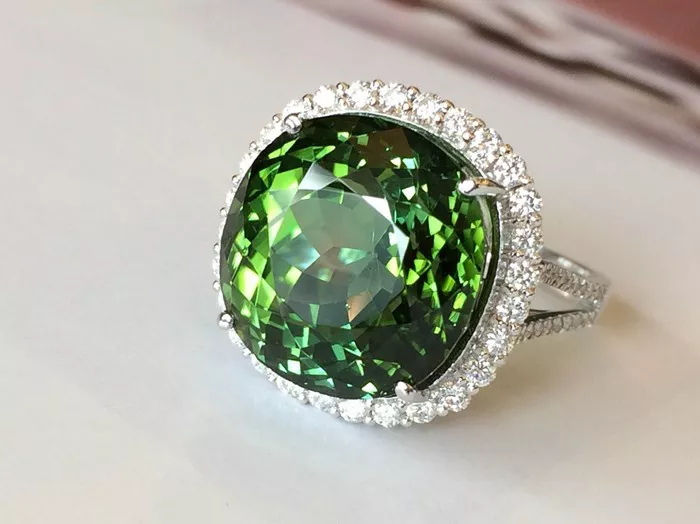Emeralds, with their captivating green color and stunning beauty, are among the most prized gemstones in the world. But before emeralds are cut and polished into the exquisite gems we see in jewelry, they begin as rough crystals known as emerald rocks. In this article, we’ll explore what emerald rocks look like, how they form, and why they are valued by gemstone enthusiasts and collectors.
Introduction to Emerald Rocks
Emeralds are a variety of the mineral beryl, which also includes other gemstones such as aquamarine, morganite, and heliodor. What sets emeralds apart is their rich, vibrant green color, which is caused by trace amounts of chromium and sometimes vanadium within the crystal structure. Emeralds have been treasured for thousands of years for their beauty, rarity, and symbolic significance.
Emerald rocks are the raw, uncut crystals that are mined from the earth. These rough specimens exhibit the natural shape and texture of the emerald crystal, often showcasing the rough surfaces, jagged edges, and natural formations that are characteristic of gemstone rough.
What Does an Emerald Rock Look Like?
Emerald rocks possess several distinctive characteristics that set them apart from other minerals:
Color: The most striking feature of emerald rocks is their vibrant green color. While the exact shade of green can vary depending on factors such as the presence of impurities, the most desirable emerald rocks exhibit a rich, intense green hue reminiscent of lush forests and tropical foliage. The color of emerald rocks is often uneven and may show variations in saturation and tone.
Texture: Emerald rocks typically have a rough, uneven texture with natural facets and crystal formations. Unlike polished gemstones, emerald rocks retain their natural shape and surfaces, reflecting the raw beauty of the mineral. These rough specimens may exhibit irregular shapes, jagged edges, and natural growth patterns that add to their character and appeal.
Clarity: Like all gemstones, emerald rocks can contain internal characteristics known as inclusions. These natural features are remnants of the crystal’s formation process and may include minerals, fractures, or other imperfections. While some inclusions may be visible to the naked eye, others may require magnification to observe. Inclusions are considered a natural part of emerald’s character and can add to the gemstone’s authenticity and uniqueness.
Transparency: Emerald rocks can vary in transparency from opaque to semi-transparent. Some specimens may have a cloudy or milky appearance due to the presence of internal inclusions or fractures, while others may exhibit greater clarity and transparency, allowing light to pass through the crystal. The transparency of emerald rocks can affect their overall appearance and value.
Size: Emerald rocks come in a variety of sizes, ranging from small crystals to large, impressive specimens. The size of an emerald rock is often determined by factors such as the location and conditions of its formation, the quality of the mining operation, and any subsequent processing or sorting. Larger emerald rocks are rarer and may command higher prices in the market.
Where Do Emerald Rocks Come From?
Emeralds are found in several regions around the world, each with its own unique geological conditions and characteristics. Some of the most renowned sources of emerald rocks include:
Colombia: Colombia is widely regarded as one of the premier sources of emeralds, known for producing some of the finest and most valuable specimens in the world. The Muzo, Chivor, and Coscuez mines in Colombia’s Boyacá region are particularly famous for their rich deposits of high-quality emeralds. Colombian emeralds are prized for their deep, vibrant green color, exceptional clarity, and unique crystal formations.
Zambia: Zambia has emerged as a significant source of emeralds in recent decades, particularly from the Kagem and Grizzly mines in the Copperbelt region. Zambian emeralds are known for their rich, saturated green color, excellent clarity, and large crystal sizes. While Zambian emeralds may not command the same premium prices as Colombian emeralds, they are highly valued for their beauty and quality.
Brazil: Brazil has a long history of emerald mining, with significant deposits found in the states of Minas Gerais and Bahia. Brazilian emeralds are known for their vivid green color, good clarity, and unique crystal formations. While Brazilian emeralds may not be as well-known as Colombian or Zambian emeralds, they are prized for their beauty and accessibility.
Afghanistan: Afghanistan is another important source of emeralds, particularly from the Panjshir Valley and the Jegdalek region. Afghan emeralds are known for their rich, dark green color, good clarity, and unique crystal formations. While Afghan emeralds may be less common in the market compared to other sources, they are highly valued for their unique character and origin.
Conclusion
In conclusion, emerald rocks are raw, uncut crystals prized for their vibrant green color, natural beauty, and rarity. These rough specimens showcase the raw, untouched beauty of the emerald crystal, with their rough surfaces, jagged edges, and natural formations. Emerald rocks are found in several regions around the world, with Colombia, Zambia, Brazil, and Afghanistan among the most renowned sources of high-quality specimens. Whether you’re a gemstone enthusiast, collector, or jewelry designer, emerald rocks offer a unique and captivating option for incorporating the beauty of nature into your designs. With their rich history, stunning color variations, and timeless appeal, emerald rocks continue to captivate and inspire people around the world.


